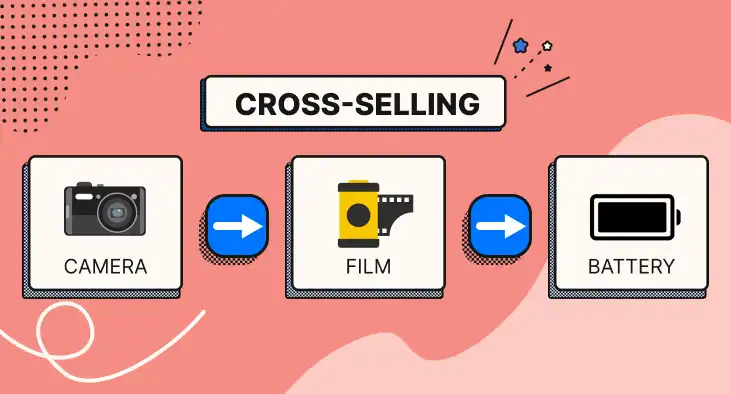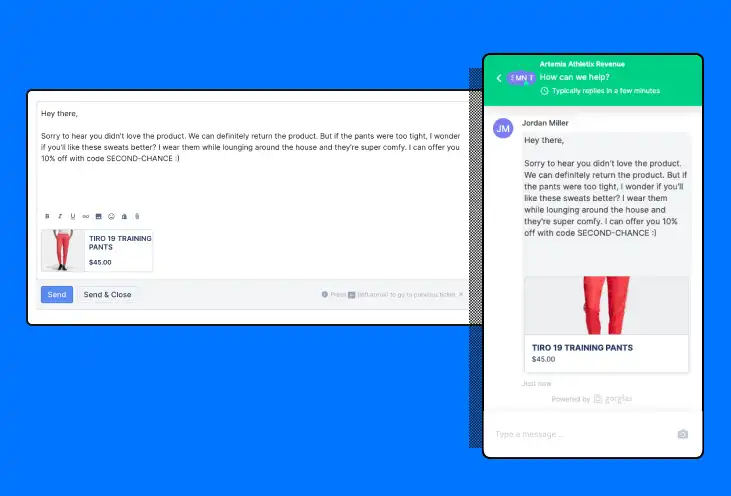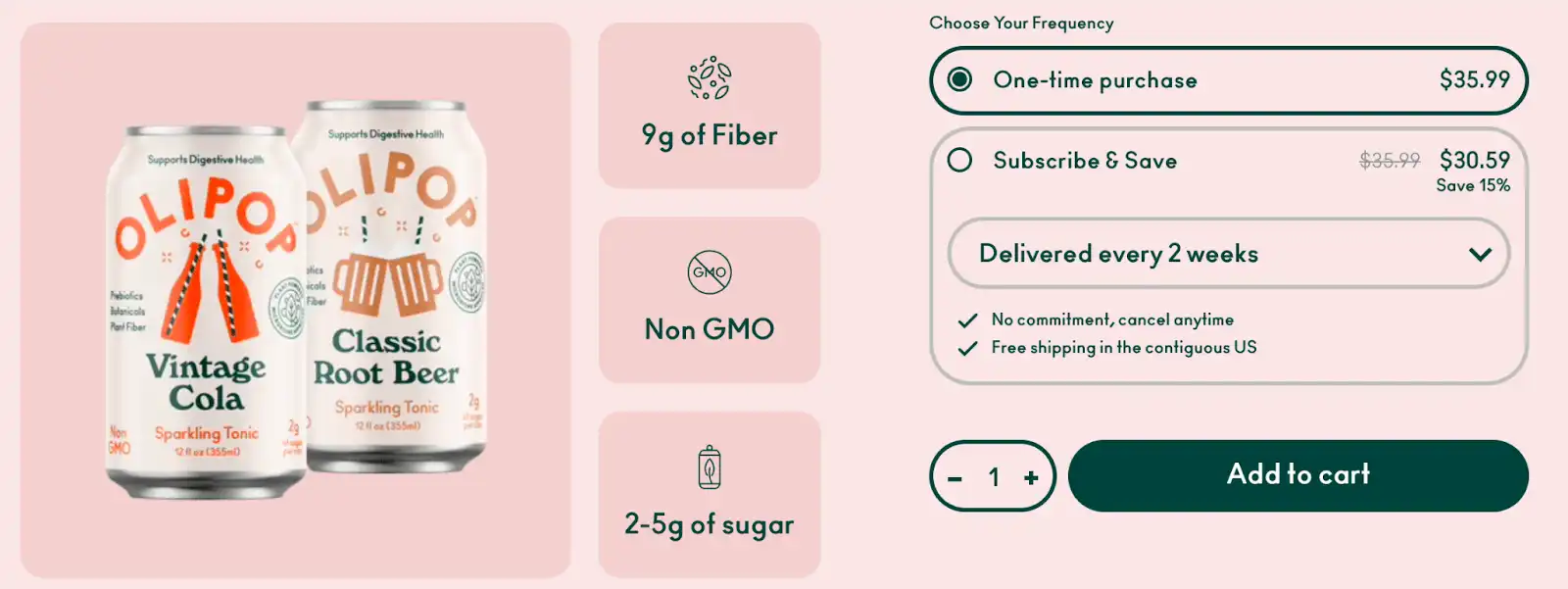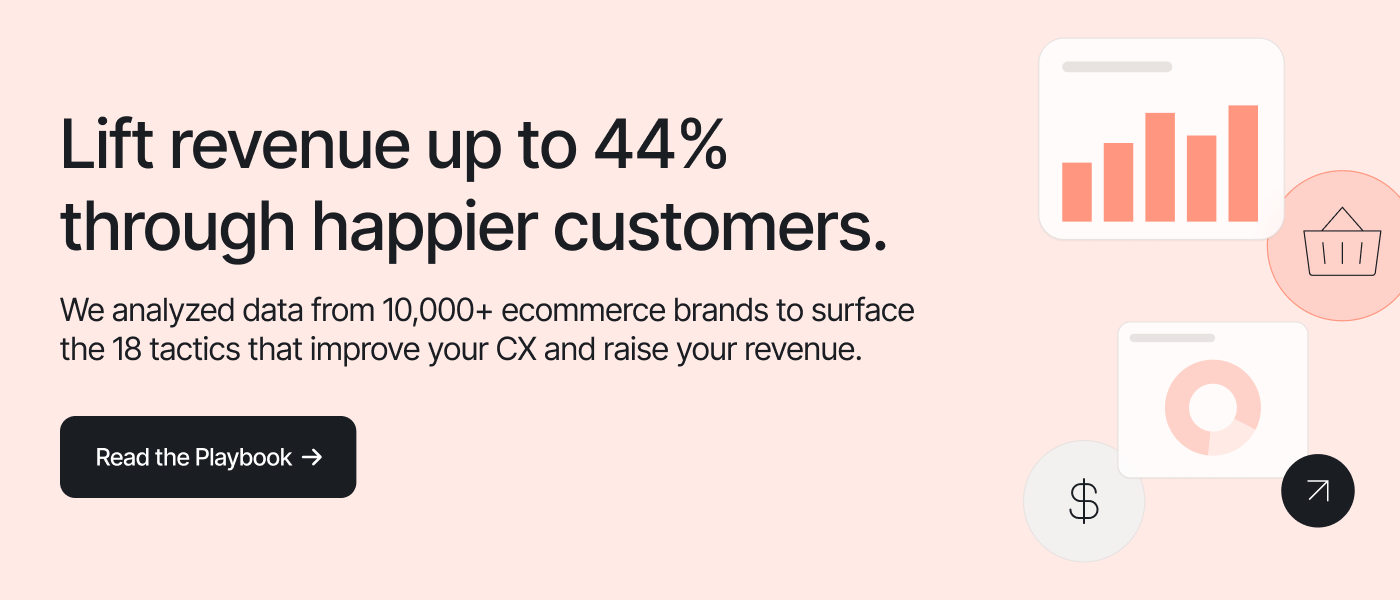Does your business have an ecommerce upselling strategy in place?
If not, you’re leaving money on the table.
Ecommerce upselling involves selling higher quantities and more expensive products to shoppers who are already considering a purchase. And for most ecommerce companies, the bulk of upselling and cross-selling happens when the customer support team interacts with customers who are already on your site or have already purchased an item. One reason is that returning customers spend 67% more than first-time shoppers, according to Bain and Co. Plus, it costs about five times more to acquire a new customer than it does to retain one.
In other words, chasing after new customers is expensive and brings in lower-value sales. Upselling, cross-selling, and customer-experience strategies to keep customers coming back — and spending more and more each time — is more profitable.

Whether you’re just starting to explore upselling or it’s time to retool your current efforts, these 11 best practices can improve your efforts and help you reach greater results.
What is ecommerce upselling?
Ecommerce upselling is a sales technique of allowing customers to purchase a higher-priced item instead of the item they selected from your ecommerce store, to convince the customer to spend more money. When successful, ecommerce upselling provides additional perceived value to the customer and nets your store a higher sale price (and higher profits). A simple example is a shopper deciding to get an expensive camera after initially coming in for a more basic model.

Ecommerce upselling is the digital equivalent of old-fashioned, in-person upselling. Instead of speaking to an in-store associate, customers get recommendations from pop-ups, customer support agents, and other prompts throughout your website: usually on product pages, in the cart, or at checkout.
Here’s an example. Say you’ve launched an ecommerce venture that sells high-end, organic toothpaste. A customer adds a single tube of toothpaste to their cart and heads to checkout. At the checkout page, you trigger a pop-up that offers:
Buy 3 tubes and save 20%!
Or perhaps:
Try Our Variety Pack, Get One Tube Free!
You could create an endless variety of deals here, but you get the idea: You’re offering customers more (usually with some kind of discount or value proposition) to entice them to spend more and increase your average order value (AOV).
What is ecommerce cross-selling?
Ecommerce cross-selling is a similar sales tactic where you strategically recommend add-ons related to whatever the customer has put in their cart. The goals are the same: higher ticket value, greater sales, and greater customer satisfaction. Instead of upgrading to a fancy camera, a shopper who accepts a cross-selling offer might also buy a roll of film and an extra battery in addition to the basic camera.

If the camera example above doesn't make sense, let’s go back to our toothpaste company. A great example of cross-selling would be something like this:
Got toothpaste? Don’t forget the brushes! Add 3 bamboo brushes for just $5!
For this brand, other great cross-selling opportunities could include floss, electric toothbrush heads (assuming you sell an electric toothbrush), and maybe even night guards. All appeal to health-conscious customers looking for oral hygiene products.
What is the difference between cross-selling and upselling?
Upselling and cross-selling are similar concepts, but the terms aren’t interchangeable.
With upselling, you’re offering the customer more of a product or a better version of a product at a higher price point. If the customer bites, the upsell item replaces the original item in their cart.
For a real-life example of upselling, think of Apple. Each of their products has multiple storage levels, premium versions, and newer models they could (and do) push customers toward.
With cross-selling, you’re offering the customer additional products, usually related items that work in tandem with that original item. Cross-selling opportunities don’t replace the original item but stack on top of it.
For a real-life example of cross-selling, think of Amazon. No matter what you buy — or even look at — you’ll inevitably be shown a “People also bought…” section. It’s usually full of on-topic and useful add-ons, like battery packs or chargers for phones or cables and USB mice for laptops.
{{lead-magnet-1}}
11 quick ecommerce upselling tips to drive more revenue
Whether upselling is new for your ecommerce business or you’re looking to retool your existing upselling strategies, check out these eleven quick tips that can help you drive more revenue more effectively.
1) Use tools specifically built for ecommerce upselling
For small and medium ecommerce businesses, using a tool that’s already done the work of building out support for ecommerce upselling is the single most important step to take.
Dynamic, beautiful, frictionless upselling is prohibitively complex to create on your own, requiring a serious resource outlay for even the largest ecommerce sites. But several ecommerce platforms have already done this hard work and make upselling and cross-selling easy to implement for any vendor using their platform.
Many Shopify stores already take advantage of upselling thanks to the company’s smooth interface enabling the offering. If you’re a current or prospective Shopify user, check out 30+ of the best Shopify apps to boost your performance.
Some of our favorite Shopify apps for upselling include:
- One Click Upsell which automatically gives customers recommendations at checkout in a single click
- In Cart Upsell & Cross Sell which gives shoppers product recommendations on your shopping cart page
- AfterSell Post Purchase Upsell which presents buyers with opportunities to purchase more items throughout the post-purchase experience
Not a Shopify user? We’ve created similar guides for BigCommerce and Magento. Check out the best extensions for BigCommerce or the best extensions for Magento and start powering up your store today!
2) Incentivize your customer support agents to recommend products
Your customer support agents speak to customers more than anyone. They have a huge opportunity to drive sales — up or down, depending on the quality of service — for your brand.
Here are a few examples of moments when customer support agents can cross-sell or upsell clients:
- When a customer leaves a positive product review, you can offer them a discount for their next purchase as a thank you
- When a customer asks to return an item, you can urge them to opt for an exchange instead (with a different product recommendation they might prefer)
- You can include dynamic product recommendations in your email signatures
- You can give relevant product recommendations to customers lingering on your site via live chat — more on that below
If you use Shopify, Gorgias makes giving great product recommendations easy thanks to our integration with the product picker, which lets agents add product recommendations to tickets without leaving the helpdesk:

Agents will pursue more product upsells and cross-sells with the right incentives, so we encourage larger teams to reward agents for driving revenue. Measuring the amount of revenue generated by customer support is challenging, which is why we built the revenue dashboard in Gorgias, which gives you a breakdown of revenue metrics, such as tickets coveted by each agent or your team’s conversion rate:

3) Show off your best-selling and relevant products
Using products that have already sold well in the past will significantly improve the chances of cross-selling or upselling.
For upselling, this isn’t the place to push your most exclusive, niche products. Focus on popular upgrades instead, ones in the same price range as whatever’s in the customer’s cart. People looking to spend around $20 might be convinced to spend $30 or $35, but they’re unlikely to jump to a $250 item no matter how amazing it is.
For cross-selling, make sure you’re using highly targeted, highly useful products, and make sure they’re already good sellers. If you’re selling whole coffee beans, a hand or electric grinder makes great sense. A nice $50 manual brewer (like a siphon or AeroPress) might make sense too.
But a $999 espresso maker? Not so much.
Likewise, aim to recommend similar products whenever possible. A related product is anything that compliments the product in the customer’s cart or a product that better satisfies the customer need that drove them to add the original item.
(Pro tip: People shopping for a dozen roses right before Valentine’s Day are never going to go for a bell pepper instead.)
4) Use proactive live chat to suggest products at key points in the customer journey
If you use live chat for customer support, you may be able to start conversations with website browsers proactively. This allows your customer support team to speak when they’re deciding whether — and how much — to purchase. Your customer support team can answer questions that get, recommend products, and offer discounts to drive a sale.
We call these proactive chats “chat campaigns” and recommend designing them around key points of the customer journey. For instance, if a customer spends a lot of time on your website without adding an item to their cart, you can fire a live chat asking whether they need any help finding a product:

Likewise, you can message customers if they add a product to their cart but don’t place a purchase for a few minutes. You can open the door for them to ask any questions that might be stopping them from making a purchase:

Or, to bring it back to cross-selling, you can offer product recommendations and discounts to motivate shoppers to add more items to their carts:

The possibilities of chat campaigns are wide-ranging. If you want to learn more, book a demo and ask about the many ways Gorgias’ live chat can drive sales on your site. Or, if you want to spend more time researching live chat, check out one of these resources:
- Our live chat app page, which shows off some of the key features
- Our list of the best live chat apps for any purpose
- Our list of the best live chat apps specifically for ecommerce
- Our list of the best live chat apps for Shopify
- Our list of top live chat statistics to learn more about the tool's impact
- Our guide to adding live chat to your Shopify store
5) Optimize the post-purchase experience to cross-sell, announce new products, and plug other promotions
Your post-purchase experience is everything that happens after a customer completes a purchase, from the digital receipt they receive to follow-up marketing materials.
Consider using your purchase confirmations as a place to send out product recommendations, discounts, announcements about new products, subscription offers (“Never run out again!”), or whatever else makes sense for your business model.
Strict upselling is likely out at this point (they already bought the original item), but you have all sorts of opportunities for convincing that customer to spend more with you during an extended sales session.
You can manually chase after customers post-purchase, but those efforts will be disorganized and time-consuming. Plus, you might run into trouble if you try to cross-sell a customer that’s dissatisfied with their purchase. Klaviyo is one of the best tools on the marketing for email and SMS marketing (plus, it integrates with Gorgias to help you unify your customer support and marketing).

And if you sell subscription-based products, Recharge (and its Gorgias automation) can help you manage your subscription customers and put them on larger plans.
6) Reduce the number of clicks wherever possible
The best upsells and cross-sells are the ones that feel smooth and simple. You want to keep your upselling tactics subtle, not pushy, and make sure your tech tools and partners enable a smooth and frictionless experience.
All it should take is a click or a tap, maybe two, for the upsell to be completed. Anything more complex than that could start getting in the way and might even drive customers away out of frustration or “move on” syndrome (they move on to another tab or app and never come back).
One approach to one-click upselling is to target customers who have already added items to their cart and even inputted their credit card information. Then, your buyers can click to add the item to their cart directly, rather than having to go to that item’s product page, add it to the cart, and then checkout. It’s kind of like an easy-to-grab candy bar put right next to the checkout counter.
Here’s an example from Little Poppy Co., a brand that smartly tries to upsell shoppers with a subscribe-and-save option during the checkout flow:

If you use Shopify, One Click Upsell can add this functionality to your store.
7) Offer only two or three product options
Next, make sure you aren’t overwhelming new customers with too many choices. At the point where a customer is ready to put a product from your online store in their cart, they’re already pretty far down the purchase path. Whether you’re cross-selling or upselling, keep your set of upselling options small — no more than three at most.
Why? Because successfully upselling products needs to feel like simply making a better choice — not like going back to square one and comparing a half dozen new options.
Make your upsell offer clear and concise so you can have the best chance of increasing that cart value without frustrating or confusing your users.
8) Offer discounts and specials while upselling
Next up is a crucial upselling strategy: You’ve got to sweeten the pot. Use discounts and specials to motivate your customer to action.
Yes, discounts cut into your bottom line, but their ability to attract customers and increase revenue is undeniable. Simply build the discount into your asking price, and all is well.
Think of it this way: If your customer came to your site intending to purchase a single tube of toothpaste or a pound of coffee or a bucket of protein powder, it’s safe to assume they’re going to be biased toward the thing they meant to buy (in the size they meant to buy it).
You won’t convince many of them to simply buy two or three instead of one just because you asked them to in the checkout process. Most will simply say “no thanks, I only need one” and skip the offer.
What moves hearts and minds (and credit cards) is the perception of value. Offering a discount or free shipping for certain cart values is a great way to make cross-sell offers sweeter. And one of the best upselling techniques is to include a subscribe-and-save option to motivate customers to sign up for repeat purchases from the jump:

9) Target repeat customers
Next up, if your chosen tools and ecommerce platform allow you to make this distinction, focus your cross-selling and upselling efforts on your returning customers, not on new ones.
For one, it’s way easier to sell to an existing customer than to a new one. Customer acquisition costs can be five times as much as customer retention costs, and you don’t want anything scaring off those new customers, including an upsell attempt that feels a little too pushy.
Your repeat customers are also much more likely to have a positive opinion about your business and your ecommerce site. This segment of your market is already primed to like what you have to offer and is much more likely to trust your recommendations based on their previous positive experiences with your brand.
If you use Gorgias, you can integrate with customer loyalty tools like Yotpo or LoyaltyLion, both of which help you identify and nurture customers that love your brand (and who would therefore be good candidates for upsell and cross-sell campaigns.)
When you add these integrations to your Gorgias account, you bring that loyalty data inside your helpdesk, giving your agents the context they need to determine whether to try and sell more to a repeat customer:

10) Limit offer availability
Whatever recommended products you’re presenting to customers, create a sense of urgency or scarcity by setting a time limit for the discount or special offer. Yes, this can be cheesy, and it might not be right for high-end or prestigious brands. But it’s highly motivating — and highly effective.
The reasons why get into some of the psychology surrounding shopping. Discounts are highly motivating, but savvy shoppers can see through “permanent discounts” well enough that the perception of value starts to disappear. By setting a timer (and displaying it in countdown fashion, if your plugins allow), you send some key messages:
- The full price is the real price.
- This discount is special (and so are you)!
- It’s now or never — if you miss it, you may never get access to this discount again.
- The timer’s ticking, so you’d better move now; no time to stop and think.
So how long should your offer last? It depends on the nature of your business. Small-dollar retailers might make the window as short as 30 minutes. 48 hours makes sense for many, and one to two weeks can be a good timeframe for larger commitments that might have their own email sequences and funnels.
Instead of limiting availability with timing, you can also opt for a longer-term selling strategy and ask for a customer’s email address instead. That information will let you sell more in the long term:

11) Always A/B test
Not every offer is a winner. The same goes for headlines, email subjects, and all sorts of elements in the marketing world.
But how can you determine which ones are working and which are falling short? A/B testing.
A/B testing is the process of trying two different sets of wording on a smaller subset of an audience to determine which one lands better.
You see this most often with marketing emails, where two initial test emails are sent to two small subsets of a list. Whichever subject line gets a better open rate wins the day and gets attached to the main email going out to the entire list.
You can apply this concept in numerous spaces. YouTubers A/B test video titles. News organizations do the same with some articles. And you can do it with your upselling offers.
Set up two similar offers (or an identical offer worded two different ways or using two different visual styles) and unleash both on your customer base. After enough customers receive one or the other offer, it’ll become clear which one has the better conversion rate and the best effect on the bottom line.
This is worth the investment: Forrester found that a strong UX can increase conversion rate by 400% over a weak one. That’s a lot of extra tubes of toothpaste!
Of course, you need an ecommerce platform that allows you to implement A/B testing on upselling and cross-selling initiatives, so make sure you have access to that feature through your chosen platform.
{{lead-magnet-2}}
Integrate all your upselling tools with Gorgias
By implementing (or refreshing) ecommerce upselling and cross-selling strategies for your ecommerce site, you’ll enjoy a range of benefits, with improved customer experience and higher average cart value sitting at the top of the list. And with the eleven best practices we’ve provided here, you’re now ready to take your upselling efforts to the next level.
Of course, succeeding in ecommerce and upselling requires the right suite of ecommerce tools and partners. Gorgias integrates instantly with more than 150 top ecommerce tools like Shopify, Yotpo, Klaviyo, LoyaltyLion, and so many more.
Ready for a better (and more profitable) helpdesk experience? See what Gorgias can do for you and sign up for free now.

















